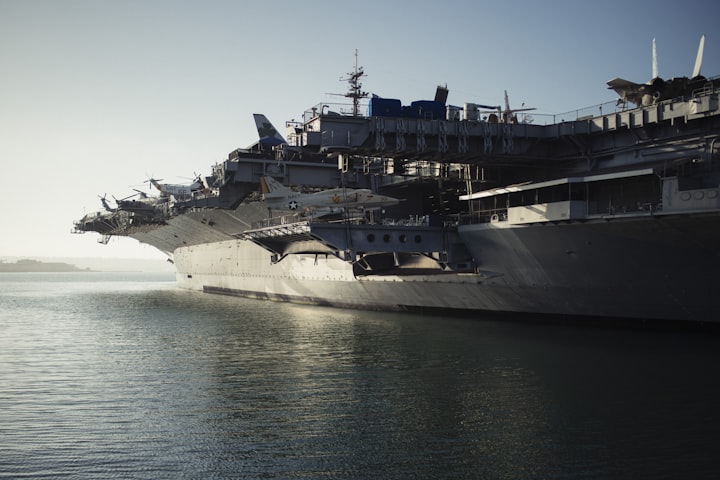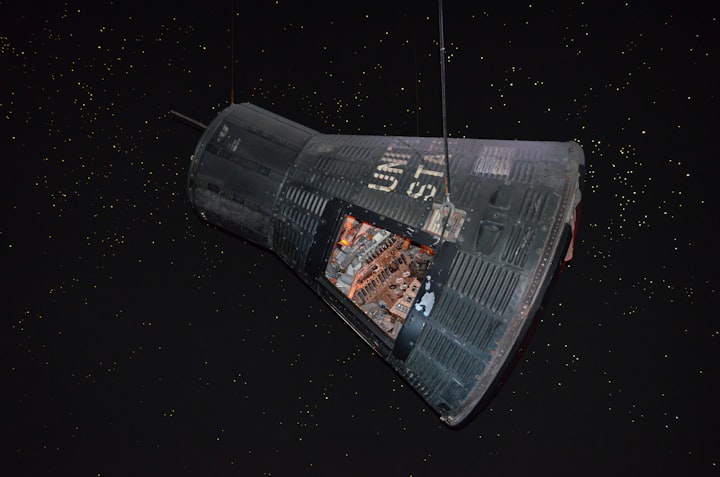
The United States Navy is the maritime warfare service branch of the United States Armed Forces. It is one of the largest and most powerful navies in the world, with over 330,000 active-duty personnel, 290 deployable ships, and more than 3,700 aircraft. The Navy's mission is to maintain, train and equip combat-ready naval forces capable of winning wars, deterring aggression and maintaining freedom of the seas.
The history of the United States Navy dates back to the American Revolution when it was created to fight against the British Navy. Since then, the Navy has played a vital role in every major conflict in the nation's history, including the Civil War, World War I, World War II, the Korean War, the Vietnam War, the Gulf War, and the War on Terror.
The Navy's primary mission is to maintain control of the sea, which includes protecting American interests and projecting American power overseas. This is accomplished through a variety of means, including the use of aircraft carriers, submarines, surface ships, and amphibious forces. The Navy also conducts humanitarian missions, disaster relief efforts, and search and rescue operations around the world.
One of the Navy's most iconic assets is the aircraft carrier, which is essentially a floating airfield. The carrier serves as a mobile base for a variety of aircraft, including fighter jets, bombers, and helicopters. The Navy currently operates 11 aircraft carriers, which are used to project American power around the world. Each carrier is crewed by over 5,000 personnel and can carry up to 90 aircraft.
The Navy's submarine force is another critical component of its arsenal. Submarines are used for a variety of purposes, including intelligence gathering, surveillance, and attack missions. The Navy currently operates 56 submarines, including 14 ballistic missile submarines, which are capable of launching nuclear missiles. The Navy's submarine force is one of the most advanced and capable in the world, and its ability to operate undetected makes it an essential tool for maintaining control of the seas.
The Navy's surface fleet includes a variety of ships, including destroyers, cruisers, and amphibious assault ships. These ships are used for a variety of missions, including escorting aircraft carriers, providing fire support for ground troops, and conducting special operations missions. The Navy also operates a variety of support vessels, including supply ships, hospital ships, and research vessels.
The Navy's amphibious forces are tasked with conducting operations in littoral, or near-shore, environments. These forces include Marine Corps units, which are trained to conduct amphibious assaults and other specialized operations. The Navy also operates amphibious assault ships, which are essentially floating bases for Marine Corps units. These ships are capable of carrying a variety of aircraft, including helicopters and vertical takeoff and landing (VTOL) aircraft, as well as hundreds of Marines and their equipment.
The Navy's Special Operations Forces (SOF) are some of the most highly trained and capable soldiers in the world. These forces include Navy SEALs, who are trained to conduct a variety of missions, including reconnaissance, direct action, and counterterrorism. The Navy also operates Special Warfare Combatant-Craft Crewmen (SWCC), who are trained to operate small boats and conduct maritime special operations.
The Navy's role in the world is essential to maintaining global stability and security. Through its presence and actions, the Navy helps to deter aggression, maintain freedom of the seas, and promote American interests and values around the world. The Navy's ability to project power and respond to threats quickly and decisively is critical to its mission.
The Navy's personnel are some of the most highly trained and dedicated soldiers in the world. They undergo rigorous training and are held to the highest standards of professionalism and excellence. The Navy's core values of honor, courage, and commitment are instilled in every sailor, and these values guide their actions and decisions on and off duty.
Despite the Navy's many successes, it faces several challenges. One of the biggest challenges is keeping up with rapidly advancing technology. As new technologies emerge, such as unmanned systems and artificial intelligence, the Navy must adapt and incorporate them into its operations to remain effective.
Another challenge is maintaining the Navy's aging fleet. Many of the Navy's ships and aircraft are reaching the end of their service lives and need to be replaced. This requires significant investments in new ships, aircraft, and other equipment, which can be costly.
Additionally, the Navy must continue to attract and retain top talent. As the job market becomes increasingly competitive, the Navy must offer competitive salaries, benefits, and opportunities for career advancement to attract and retain the best and brightest.
In conclusion, the United States Navy is a critical component of the nation's defense and security. Through its presence and actions, the Navy helps to maintain global stability and promote American interests and values around the world. The Navy's personnel are among the most highly trained and dedicated soldiers in the world, and their commitment to the Navy's core values of honor, courage, and commitment is unwavering. Despite the challenges it faces, the Navy remains ready and capable of fulfilling its mission to maintain, train, and equip combat-ready naval forces capable of winning wars, deterring aggression, and maintaining freedom of the seas.
About the Creator
Michael
This writer brings characters and worlds to life with vivid descriptions and compelling narratives. They transport readers to different times and places, leaving them longing for more.






Comments
There are no comments for this story
Be the first to respond and start the conversation.